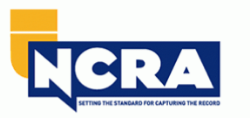Trial Presentation Trusted Experts in Courtroom Technology and Graphics
Trial Presentation Trusted Experts in Courtroom Technology and Graphics
Blog Article
Grasping Trial Discussion: Tips for Engaging and Persuasive Court Techniques
In the realm of trial presentation, the capability to engage and encourage is extremely important. The challenge exists in perfectly incorporating them into a cohesive presentation. What techniques can truly boost a test presentation from ordinary to exceptional?
Understanding Your Audience
To properly understand trial presentation, it is essential to comprehend your audience. Recognizing their demographics, backgrounds, and potential biases can aid customize your presentation to reverberate with them effectively.

An understanding of the court's preferences and court etiquette is just as important, as it can affect the flow of your discussion. Juries might prioritize brevity and clarity, so offering your case in a simple fashion can improve your reputation. In addition, acknowledging the rival guidance's techniques can assist in preparing counterarguments that successfully address their points.
Ultimately, recognizing your audience permits you to engage them better, promoting connection and persuasion throughout the test (trial presentation). By leveraging insights about their inspirations and expectations, you can develop a compelling discussion that resonates and eventually affects the result of the situation. This foundational knowledge is necessary for any lawyer aiming to achieve success in the court
Crafting a Compelling Narrative
A well-crafted narrative works as the foundation of an efficient trial presentation, guiding the audience via the intricacies of the situation. This narrative must be structured to engage jurors psychologically and intellectually, making the truths relatable and understandable. By weaving with each other the aspects of the situation-- such as the timeline, vital events, and critical statements-- lawyers can create a meaningful story that resonates with jurors.
To accomplish this, it is essential to recognize the central motifs that will certainly drive the narrative. Attorneys should concentrate on the inspirations and objectives of the celebrations included, showing the human aspects of the case (trial presentation). This technique not only preserves juror interest but also fosters compassion, leading them to link directly with the narrative
Each section of the story must construct toward an engaging orgasm, finishing in an influential conclusion that enhances the case's core message. Eventually, a solid narrative not just makes clear the problems at hand yet likewise creates a long lasting impact that can affect the result of the test.
Making Use Of Visual Aids Properly
How can aesthetic aids enhance the performance of a trial presentation? Aesthetic help work as effective devices that can considerably improve juror understanding and retention of intricate details - trial presentation. When employed thoughtfully, they can clarify vital points, highlight connections, and emphasize vital proof that sustains the situation narrative
Reliable aesthetic aids include charts, charts, timelines, and images, which can simplify elaborate information and provide context. A timeline can succinctly communicate the series of occasions, while a chart can highlight statistical details in an aesthetically interesting manner. The calculated usage of multimedia presentations can likewise boost involvement and check my reference preserve juror rate of interest throughout the trial.
Furthermore, visual aids can aid to evoke psychological responses, strengthening the human components of a case. By presenting pictures or video clips appropriate to the case, attorneys can produce a more engaging and relatable story. However, it is necessary to make certain that aesthetic aids are expertly made and not excessively complicated, as this can cause complication instead than clarity.
Involving Body Language Strategies
Aesthetic help are not the only devices that can enhance the performance of a test discussion; involving body movement techniques also play an essential role in catching juror focus and conveying confidence. A presenter's nonverbal cues can dramatically influence jurors' understandings and responses, making it important to grasp these methods.

Moreover, varying your vocal tone and pace can improve your narration, making it extra engaging. Stopping purposefully enables jurors to take in essential information and signifies the relevance of what you are claiming. Moving purposefully within the court can help strengthen your factors, supplied it does not sidetrack from your message.
Including these body language techniques will certainly not just enhance your courtroom presence yet additionally promote a more persuasive connection with jurors, inevitably adding to the success of your test presentation.
Practicing for Impact
Effective trial presentations hinge not just on the web content yet likewise on the shipment, making technique essential for impact. The value of rehearsal can not be overstated; it enables lawyers to refine their debates and establish a commanding presence in the courtroom. Participating in deliberate technique aids lawyers to recognize their toughness and weaknesses, enabling them to adjust their pacing, tone, and body language as necessary.
To exercise for influence, simulate test conditions as very closely as feasible. This consists of utilizing aesthetic help, practicing in front of coworkers, and getting positive comments. Recording session can additionally offer beneficial understandings right into shipment design and audience engagement. Focus on quality in speech, making certain that complicated legal ideas are communicated efficiently to the jury.

Final Thought
Mastering test discussion entails a complex strategy that combines target market understanding, narrative advancement, aesthetic help, and body language. Rigorous technique in substitute setups better strengthens these approaches, making certain that each discussion reverberates and leaves an enduring perception on the jury.
Report this page